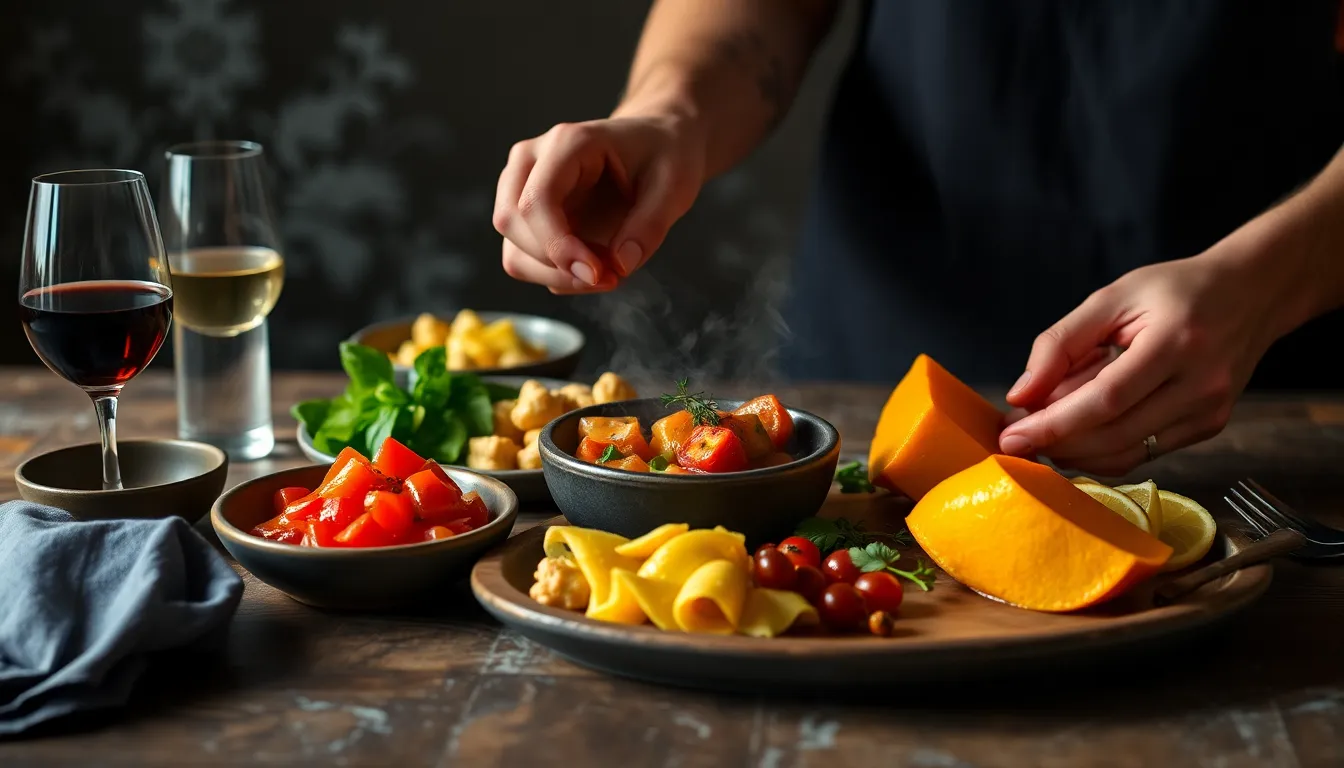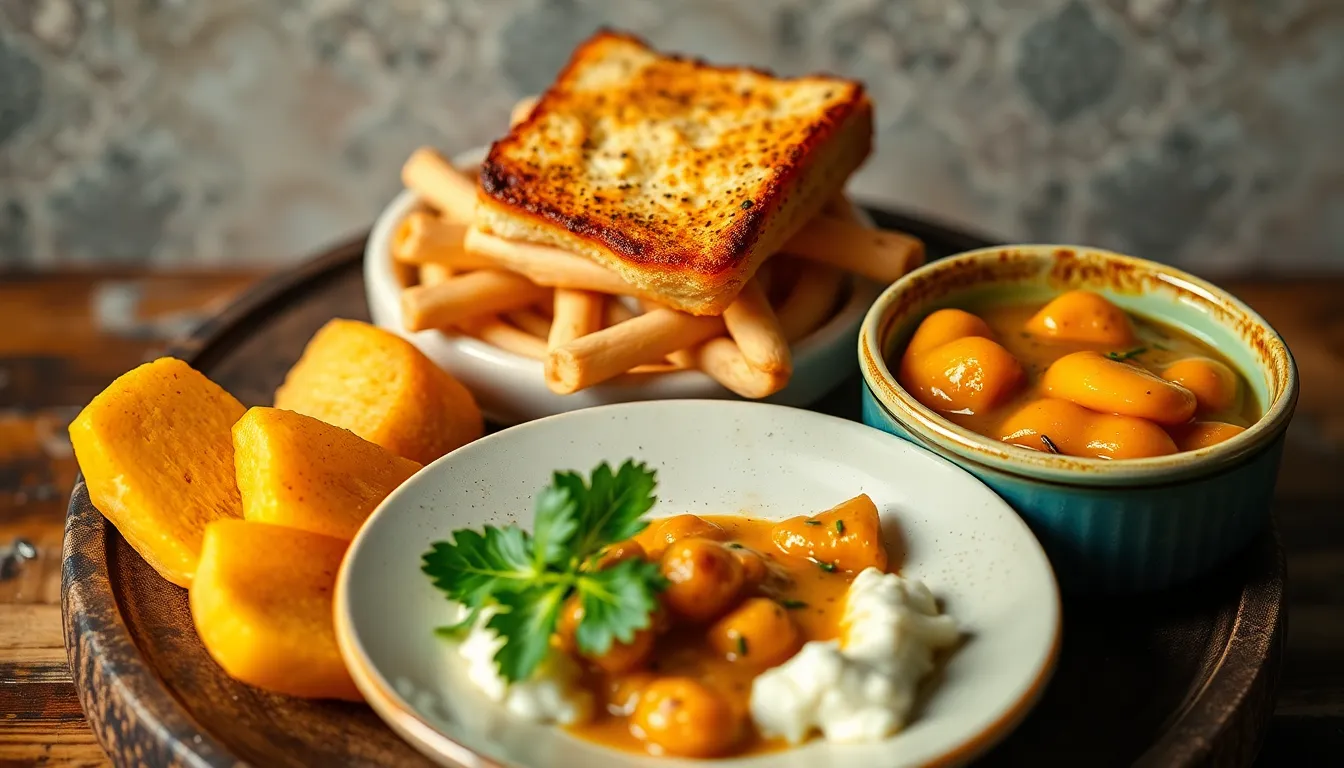Beyond Tapas: 5 Hearty Spanish Main Courses You Can’t Miss
Introduction: The Allure of Spanish Cuisine
Spain’s culinary landscape is a vibrant tapestry woven from diverse regional traditions, rich flavors, and a passionate culinary heritage. While tapas have rightfully earned their spot in the hearts of food lovers around the globe, it’s time to delve deeper into the main courses that define Spanish cuisine. These heartwarming dishes tell stories of the cultures and communities from which they originate, beckoning us to savor their unique flavors and textures.
Today, we’ll embark on an exploration of five hearty Spanish main courses, each promising a delightful culinary experience that transcends the simplicity of small plates. Prepare your taste buds for a flavorful journey through Cocido Madrileño, Paella Valenciana, Fabada Asturiana, Pisto, and Caldereta de Langosta. Let’s savor the essence of Spain, one delicious dish at a time!
Section 1: Cocido Madrileño – A Taste of Tradition
1.1 What is Cocido Madrileño?
Cocido Madrileño is not just a dish; it’s a culinary experience that warms the soul. Originating from the heart of Madrid, this hearty stew is a beloved staple that showcases the richness of Spanish gastronomy. Traditionally enjoyed during the colder months, Cocido combines a variety of meats, vegetables, and chickpeas, simmered to perfection to create a comforting, flavorful broth.
1.2 The Ingredients that Make it Special
- Chickpeas: The base of the dish, providing protein and a creamy texture.
- Meats: A mix of beef, pork, and sometimes chicken, which infuses the stew with deep flavors.
- Vegetables: Carrots, potatoes, and cabbage add freshness and color.
1.3 Tips for Preparing the Perfect Cocido
To achieve the perfect Cocido, pay attention to the cooking process. Start by soaking the chickpeas overnight for a tender bite. Use a mix of fresh and smoked meats for a depth of flavor, and consider using a pressure cooker to speed up the cooking time without sacrificing taste. Remember that Cocido is often served in multiple courses: first, the broth; then, the chickpeas and vegetables; and finally, the meats.
1.4 Nutritional Breakdown of Cocido Madrileño
| Nutrient | Amount per Serving |
|---|---|
| Calories | 450 kcal |
| Protein | 30 g |
| Carbohydrates | 50 g |
| Fat | 15 g |
| Fiber | 10 g |
Section 2: Paella Valenciana – The Quintessential Spanish Dish
2.1 The History Behind Paella
Paella Valenciana is arguably Spain’s most famous dish, with roots dating back to the mid-19th century in the region of Valencia. Traditionally a meal for farmers and laborers, it was cooked over an open fire using local ingredients such as rabbit, chicken, and snails. The dish has evolved over the years and has taken on various forms, but its heart remains in the celebration of local produce and communal dining.
2.2 Key Ingredients and Variations
While the traditional Paella Valenciana features:
- Rice: Bomba or Calasparra rice, known for its ability to absorb flavors.
- Meats: Chicken, rabbit, and sometimes duck.
- Vegetables: Green beans, tomatoes, and saffron, which gives the dish its signature color.
Modern variations include:
- Seafood Paella: Incorporating shrimp, mussels, and calamari.
- Vegetable Paella: A delightful mix of seasonal vegetables for a fresh approach.
2.3 Mastering the Art of Paella
The key to a successful paella is mastering the socarrat, the crispy layer of rice at the bottom of the pan. Here are some tips:
- Use a wide, shallow pan to allow for even cooking.
- Don’t stir the rice once the broth is added; let it cook undisturbed.
- Increase the heat towards the end of cooking to achieve that perfect crispy base.
Section 3: Fabada Asturiana – A Hearty Northern Delight
3.1 What is Fabada Asturiana?
Fabada Asturiana is a rich bean stew that hails from the mountainous region of Asturias in northern Spain. Celebrated for its hearty nature, this dish is a warming comfort food that showcases the region’s love for robust flavors and high-quality ingredients. Traditionally served during winter, Fabada is often associated with family gatherings and celebrations.
3.2 The Essential Ingredients
The secret to a delicious Fabada lies in its ingredients:
- Fabes: These large white beans are the star of the dish, known for their creamy texture.
- Chorizo: Adds a smoky flavor and vibrant color.
- Morcilla: The Asturian blood sausage contributes depth and richness.
- Onions and Garlic: Essential aromatics that enhance the overall flavor.
- Saffron: Used sparingly to impart a subtle aroma and golden hue.
3.3 Cooking Techniques for the Perfect Fabada
For the best Fabada, slow cooking is key. Start by sautéing onions and garlic, then add the beans and meats, allowing them to meld together over low heat for a few hours. This method not only develops flavors but also results in a luscious, silky broth. Serve with crusty bread to soak up the delicious sauce!
Section 4: Pisto – The Spanish Ratatouille
4.1 Understanding Pisto and Its Roots
Pisto is often referred to as the Spanish version of ratatouille, showcasing a medley of fresh vegetables. Its origins trace back to the southern region of Andalusia, where it’s a staple in many households. This dish highlights the beauty and simplicity of seasonal produce, making it a versatile option for any meal.
4.2 Key Ingredients that Shine in Pisto
The beauty of Pisto lies in its variety of colorful vegetables:
- Tomatoes: The base for the sauce, providing acidity and sweetness.
- Bell Peppers: A mix of colors adds flavor and visual appeal.
- Zucchini: For a mild flavor and tender texture.
- Eggplant: Adds a unique richness to the dish.
Optional toppings like a fried egg or a sprinkle of cheese can elevate this dish further.
4.3 How to Serve and Enjoy Pisto
Pisto can be enjoyed in various ways:
- As a side dish to grilled meats or fish.
- As a light main course, accompanied by crusty bread.
- With a fried egg on top, making it a fulfilling breakfast option.
Section 5: Caldereta de Langosta – A Taste of the Coast
5.1 What is Caldereta de Langosta?
Caldereta de Langosta is a luxurious lobster stew originating from the Balearic Islands. This dish is a celebration of fresh seafood, often enjoyed on special occasions. The combination of succulent lobster with aromatic herbs and spices creates a dish that is both elegant and comforting.
5.2 Essential Ingredients for the Best Flavor
To craft an unforgettable Caldereta de Langosta, one must focus on quality ingredients:
- Lobster: Fresh, high-quality lobster is essential for depth of flavor.
- Fish Stock: A rich base that enhances the seafood essence.
- Tomatoes and Peppers: For sweetness and a hint of heat.
- Herbs and Spices: Fresh parsley, saffron, and paprika to elevate the dish.
5.3 Cooking Tips for a Restaurant-Quality Dish
To achieve a restaurant-quality Caldereta, consider the following tips:
- Start with a flavorful fish stock, simmering it with aromatics.
- Cook the lobster gently to avoid rubbery meat; add it towards the end of cooking.
- Finish with a drizzle of high-quality olive oil for richness and shine.
Conclusion: A Culinary Journey Through Spain
From the heartwarming Cocido Madrileño to the elegant Caldereta de Langosta, these five hearty dishes encapsulate the spirit of Spanish cuisine. Each recipe tells a story of tradition, culture, and the simple joy of gathering around a table with loved ones. We hope this culinary journey inspires you to explore these rich flavors and perhaps even recreate them in your own kitchen. So gather your ingredients, invite some friends, and let the flavors of Spain transport you to its sun-kissed shores!




